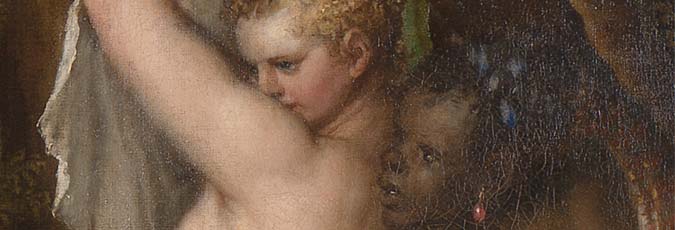Bridgewater and his relatives
Turning to consider the characters involved, Francis Egerton, 3rd Duke of Bridgewater (1736-1803), was, by all accounts a rather unsavoury individual. As a young man he was a Philistine and his lack of interest in things intellectual or cultural was noted on his Grand Tour by his tutor, Robert Wood. It was only at Wood’s inducement, so one story goes, that the youthful Duke bought some ‘marbles’ in Rome, which then remained for most of his life in their packing crates.22
After his return to England, Francis Egerton succeeded to the dukedom in 1748 on the death of his brother, the 2nd Duke. Starting off life somewhat indifferent to the opinions of others, he degenerated into someone uncouth, becoming misogynistic, miserly to some and rude to many. His unkempt appearance of later life became renowned, and he would appear in polite society with a dirty face and tattered, unfashionable clothing. He was a heavy smoker; drank a lot and took snuff. It is not unlikely that his manner changed after being unfortunate in love; certainly his career changed course as a result. Shortly after attaining his majority he had become engaged to the beautiful widowed Duchess of Hamilton, but upon the match being broken off,23 he left London, and retired to his estates in Lancashire.
He immersed himself initially in two directions very different from art-collecting. He built up a stud, buying and breeding horses and frequently racing them himself. He also became fascinated with canal schemes, so much so that he became known as the ‘Canal Duke’. As the father of British inland navigation his most famous legacy was the ‘Bridgewater Canal’ running from Manchester to Worsley, a waterway that allowed him to transport (at low cost) coal mined from his estate collieries. In time, he became one of Britain’s wealthiest nobles, consequently overcoming the reputation that he and the Duke of Roxburghe had borne as younger men of being the ‘Two Poor Dukes’.
Bridgewater’s passion for art collecting started late in life and came about, so it seems, as a result of his perceptive and cultured nephew’s persuading him that involvement with the Orléans Collection would prove a profitable business proposition. Perhaps too the thrill of the chase and a competitive spirit also played a part in his conversion to art-collecting, for when Joseph Farington inquired how the Duke happened to collect pictures, he was informed that ‘it was in consequence of [Bridgewater’s] happening to have a few fine pictures, which were in His family – and that when He had once begun His mind became ardent upon it, & the picture dealers Bryant [sic] &c., by reporting to Him a fine picture & then inflaming His mind with the apprehension of a Competition for it, by signifying that Lucien Bonoparte [sic] or some other person wanted that picture, could obtain from Him generally high prices'.
Bridgewater’s new hobby pleased his friends because it caused him ‘to take the exercise of walking much about his galleries and rooms’.24 And ‘walking much about’ was the order of the day for the pictures covered: ‘[e]very room and space in the mansion [at Cleveland Row], which is one of the largest in Belgrave-square’. According to a contemporary description, the Titian’s 'Diana and Calisto' and Diana and Actaeon hung in the parlour with other Italian works from the Orléans Collection, including works by Raphael, Annibale and Lodovico Caracci, and Domenichino. The French school was also represented in Bridgewater’s Collection by Claude and Poussin; and the Dutch masters were seen in good number through the work of Berghem, Cuyp, Isaac Ostade, Rembrandt, David Teniers, and Wilhelm Van de Velde. In 1801 Bridgewater purchased Anthony van Dyck’s portrait of 'Thomas Howard, Earl of Arundel' (Getty Mus., Malibu), which is appropriate given that in his day Arundel had been the premier aristocratic collector and promoter of art, and inappropriate in that Arundel was a true art lover and a genuine connoisseur.
Bridgewater’s nephew, 2nd Marquis of Stafford and his great-nephew, Francis Egerton, who in turn inherited the Bridgewater Collection, were both far more urbane than their relative. Both willingly undertook the Grand Tour, and both later served in public positions of responsibility: the Marquis of Stafford as MP (for Newcastle under Lyme and Staffordshire), ambassador to Paris (1790-92) and joint postmaster-general (1799-1810) and the Earl of Ellesmere as a government minister. Both retired from politics to devote themselves to the improvement of their estates. The Marquis of Stafford’s family became notorious for their role in the Highland Clearances, which displaced large numbers of the population of Northern Scotland to make way for sheep farming. Being hugely rich he was dubbed ‘a leviathan of wealth’ (by his father-in-law, Charles Greville); and James Gillray entitled a cartoon of him ‘Macenas in Pursuit of the Fine Arts.’ Both he and his son became renowned as prominent collectors and patrons of their time, relying much on the vast wealth of their wives to do so.
They supplemented the magnificent pictures acquired with the Orléans Collection with other purchases. In the Marquis of Stafford’s case a significant later acquisition was the Cabinet Lenoir, a unique collection of French portraits from the 16th to the 19th century, purchased in 1838 from its creator, Alexandre Lenoir.26 As for the future Earl of Ellesmere, his most significant purchase occurred in 1823 when he bought drawings from the collection of Thomas Lawrence, including works by the Carracci and Giulio Romano, which the government had failed on numerous occasions to acquire.27 The latter also commissioned new pictures, notably an image of 'Charles I insulted by the Soldiers of Cromwell' (1837) from the French painter, Paul Delaroche.28
Next: Changing tastes

